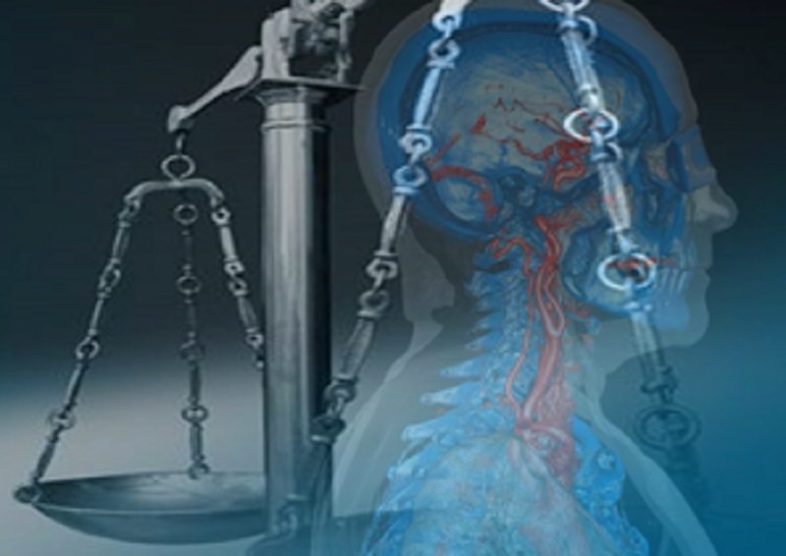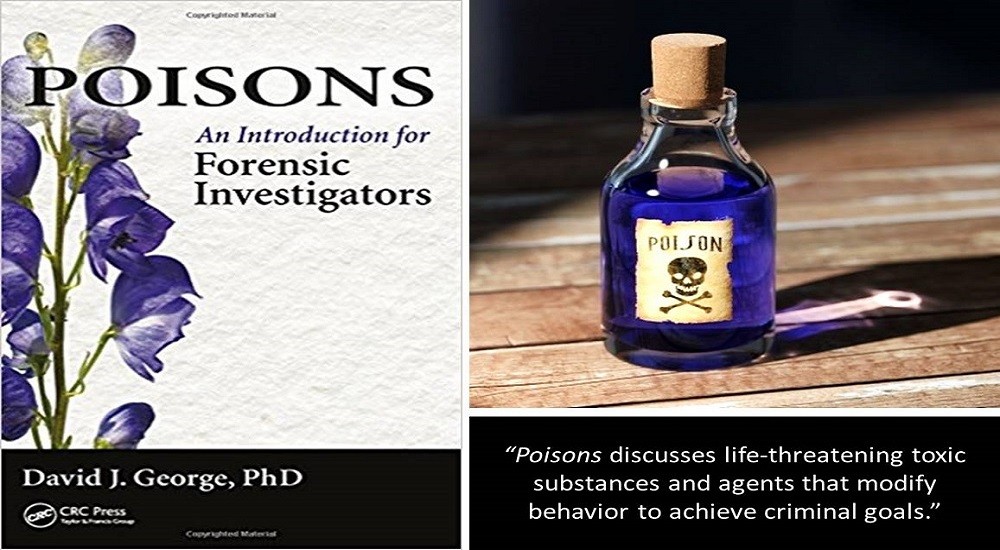Poisons are something we all have curiosities about. Substances, that when they enter the human body cause a toxic reaction which can threaten life. There are many routes to an individual being exposed to a deadly poison; homicidal acts, accidental instances and suicidal intentions, all are circumstances forensic investigators when presented with a poisoning case need to examine closely.
When it comes to using poison as a murder weapon, there is a clear shift from the use of physical objects like guns or knives commonly used in violent acts, to using a substance to quietly and often slowly take the life of a victim. When internally ingested by an individual, it is a waiting game for the toxicity to build and for the human body’s own chemical reactions to activate and adversely affect the individual from within.
Women are more commonly associated with using poison to murder. Believed to be a less violent and confrontational method of killing, the image of the passive female suits such a silent unassuming method of murder. Poisons, however, are anything but unassuming. A killer using poison simply stands back and allows patience to win out in order for them to claim their prize.
Poisons: An Introduction For Forensic Investigators is a comprehensive reference textbook written by Dr. David J. George, a clinical toxicologist and general pharmacologist with many years experience both in academia and the pharmaceutical industry.
Dr. George has written Poisons in a manner which will appeal to professionals in the field of pharmacology and forensic science and investigation, and to be accessible and engaging for those with no toxicology or science-based background. The technical terminology is explained and a full glossary is included at the end of the book providing every opportunity for reference, confirming understanding of any section within these pages.

This is not a true crime novel, nor is it a compilation of crimes and criminals, yet it is a book which is a compelling read for those with a nose for criminal activity involving poisons. Poisonous women, healthcare poisoners, drug-facilitated crimes and assassination using poisons are all covered here.
This is a technical textbook designed to be informative, accurate and educational to forensic investigators which it has certainly achieved, but it has also managed to appeal to the true crime fan, the CSI enthusiast with a thirst for knowledge and case histories in a manner that doesn’t terrify them with toxicology and pharmacological language that they cannot follow.
“Individuals who choose poisons to kill are most often interested primarily in eliminating someone from their lives without getting caught. This appears to be the defining characteristic attracting both men and women to employ poison as a murder weapon.”
Poisons is organized and presented in the perfect formula for a reference textbook that can be picked up and put down when needed. Chapters are clearly labeled with concise numbered subheadings.
Labels are informative and accurate allowing any section of the book to be located at a glance. This book is without a doubt an invaluable source of reference and an excellent learning tool.
Section I covers exposure, absorption, biodisposition and poison detection and treatment in an easy to read, concise introduction to the field of toxicology and to some of the crucial knowledge required when dealing with any case of poisoning.
Related: DNA Crime Investigations: Solving Murder and Serious Crime
What is pleasantly surprising about Poisons and probably the one thing that sets this book apart from others in a similar educational resource category, is the sheer number and variety of case studies the author has painstakingly collated to illustrate each chapter. They are truly fascinating to read and embed the more technical side of the information being read, complementing the text perfectly.
Some case studies are surprising, like the 28-year-old woman in 2007 who died from hyponatremia due to water intoxication after taking part in a water-drinking contest for a local radio station. The 30-year-old mother in 2000 whose husband was dying from terminal cancer. Her response to his illness was to kill him sooner in order to claim from his life insurance. She added sodium azide, an odorless and colorless substance which prevents body cells from utilizing oxygen correctly, to his food and medication.
Impatient by the slow reaction of the poison and not killing her husband quick enough, she lost her temper one evening and physically attacked him, beating and stabbing him to death. She was convicted of first-degree murder and sentenced to death.
“Poisoners are frequently characterized as individuals who are cunning, sneaky, and creative, have superior intelligence, and are likely to be females. These descriptors may very well fit some poisoners, but many poisoners tend to be individuals with ordinary skills and average intelligence.”
There is the 38-year-old mother of two who presented both her sick 3 and 5-year-old children to the hospital with what appeared to be a severe case of stomach flu in 2005.
The unexplained fluctuations in their conditions and the death of the 3-year-old led to an investigation which uncovered a pattern of poisoning by the mother, using the prescription medication clonidine. In 2006, she was charged with child abuse and murder, convicted and sentenced to two life terms behind bars.
Poisons And Their Effects
Section II focuses attention on individual poisons, providing key information on each including opioids, benzodiazepines, pesticides, plants and mushrooms and emerging recreational psychotropics. Psychotropic drugs which Dr. George highlights “These chemicals can produce profound changes in behavior, mood, and consciousness, and have significant toxic potential.” Each overview includes details on exposure situations and the symptoms of poisoning and a selection of real-life case studies involving each poison.

Poisons is a very well researched, expertly crafted and presented book covering a complex scientific topic in an agreeable and engaging way appealing to a wide range of readers.
While packed with science, this is not a dry textbook unable to keep the reader’s attention for long. In fact, it manages to draw the reader in. The author’s decision to end each chapter with a set of case studies serves to embed the information just presented in real life cases, providing too much temptation not to turn the page and move onto the next chapter. The more you read and the further the chapters progress, the more fascinating this book becomes. If criminal poisonings are why you picked up this book, the latter half and final set of chapters in Section III will delight you, with chapters dedicated to different types of poisoners, circumstances, and outcomes from a criminal poisoning perspective.
Related: The Yorkshire Witch: The Life & Trial of Mary Bateman
If you have a curiosity about poisons, their mechanisms and dangers, and the cases in which they have been used or maybe you are writing a novel which involves a case of poisoning whether homicidal, accidental or suicidal, Poisons should be your first port of call. With an extensive list of references included at the end of each chapter, you will not need to search any further for the information you are looking for. An excellent informative read which will educate regardless of your current level of knowledge on the subject of poisons.
‘Poisons: An Introduction For Forensic Investigators’ by Dr. David J. George is published by CRC Press and available at Amazon.
[wp-review id=”14986″]Unlimited reading on any device, try Kindle Unlimited from Amazon for free
Prefer Audiobooks? Audible 30-Day Free Trial with free audiobooks













































I would have liked more coverage on poisons.